Hotel Noise Survey Introduction
One of the first efforts we made when starting work in Shanghai, was to reach out to hotel operators, developers and designers. We visited their offices to introduce ourselves and discuss the common needs and acoustic design goals providing presentations and technical discussions. While we were met with friendly smiles, the efforts were met with a common response. At the end of our presentations and meetings, almost all responded with the comments, “you’re in shanghai, the city is noisy. Guests understand they are in the city and its noisy. There isn’t anything else that can reasonably be done.” So in essence, we don’t want to do anything was the take-away. Some reasons for these sorts of responses may include some of the following:
- Limited awareness: Some owners, developers, and designers may have limited knowledge or awareness about the impact of noise on the guest experience and the available solutions. They may not fully understand the importance of addressing acoustic and noise-related issues.
- Cost implications: The perception that addressing noise issues would involve significant costs could be a contributing factor. Owners, developers, and designers may be hesitant to invest in noise control measures due to concerns about the associated expenses.
- Prioritization of other aspects: Hotel operators, developers, and designers may prioritize other aspects of hotel design and operation over noise control. They might believe that guests are more concerned about factors like location, amenities, or price, and therefore, allocate their resources accordingly.
- Acceptance of the city environment: The notion that guests already expect a certain level of noise in a city like Shanghai could lead to complacency. Hotel stakeholders may assume that guests have accepted the city's noisy environment as an unavoidable aspect of their stay, and thus, they may not see the need for further action.
Background Objectives & Methods
Being familiar with the JD Power Hotel Guest Satisfaction Survey over the years, we wished to somewhat model our survey in a similar fashion. The JD Power survey is a comprehensive study on the hotel guest experience and reveals the critical impact of noise on guest satisfaction. The findings highlight that noise originating from various sources, such as neighboring rooms, corridors, traffic, HVAC systems and hotel facilities, significantly influences the overall guest experience. Guests place high importance on having a quiet and peaceful environment to ensure a restful stay. Alongside noise, other factors such as cleanliness, check-in experience, Wi-Fi, in-room amenities, service quality, and other amenities are also essential in shaping guest satisfaction levels. This emphasizes the need for hotels to prioritize noise control measures and create a serene atmosphere that enhances the overall guest experience.
It is important to note that the JD Power survey does not provide specific details regarding the key factors contributing to noise nor does it aim to identify the root causes of the noise issue. The survey primarily focuses on capturing guest satisfaction and does not investigate the underlying factors that may affect noise levels in hotels.
Based on our initial experiences with designers, operators and developers, we thought it would be beneficial to take the initiative and study the guest experience, learn more of the current issues with hotel performance and come back with measured data and statistics. With this information, it was our goal to:
- Establish concrete evidence that hotel noise is indeed a significant concern for guests, reinforcing its importance on par with other locations.
- Challenge the perception that the city is excessively noisy.
- Highlight that traffic noise is not the primary concern for guests.
- Highlight that resolving the primary noise issues can be achieved without substantial costs.
We wished to return with this valuable data and present these findings to existing and possibly future clients.
Guest Surveys
Our process began by surveying guests at various hotels in Shanghai, Suzhou, Hangzhou, Chengdu, Nanjing and others. We stopped at 100, with facilities rating from 2 to 5 stars with more than 9,000 responses. Approximately 58% of the hotels are rated at 4 & 5 stars. The remaining 42% were 2 & 3 star facilities.
Whenever possible, we conducted interviews with guests to gain deeper insights into how noise affected their overall experience. To ensure anonymity, we provided guests with cards containing a website link to an online survey with each card having a unique number used for tracking. The survey platform was intentionally devoid of any branding or indication that it was related to noise. Guests were presented with a list of key factors and asked to rate each one on a scale of 1 to 10, including noise as one of those factors. If noise was selected, upon submission, guests were directed to a secondary page with additional questions about their specific noise experience. These key factors are provided in the lists that follow below.
Key Factors Presented in the Survey
- Cleanliness, Odor & Hygiene of the Room
- Slow or Unreliable Wi-Fi
- Noise and Quiet Environment
- Inadequate Room Amenities
- Uncomfortable Beds
- Poor Customer Service
- Maintenance Issues
- Temperature Control Problems
- Efficient Check-In and Check-Out Process
- Food Quality / Dining Experience
Key Noise Factors Presented in the Survey
- Noise from Neighboring Rooms
- Noise from Corridors
- Footfall Noise
- Plumbing Noise
- Transportation Noise
- Room HVAC Noise
- Hotel Facilities and Amenities
- External HVAC Noise
- Noise from Public Areas
- Noise from Adjoining Properties
While the approach may seem a bit unconventional, we also visited hotel lounges and bars and blended in as regular guests. Engaging in casual conversations with fellow patrons, we initiated discussions about our personal experiences while incorporating inquiries about noise into the conversation.
Traffic Noise
Another component of our process was to make an effort to characterize the level of noise at various intersections, overpasses, local streets etc. Whenever possible and with our sound meter in hand, we would take a measurement of the noise and noted the conditions. This was initially started in Shanghai, but since we often travel to other cities and countries, we thought it would be helpful to simply set aside 15 to 30 minutes to take some traffic noise measurements. Under this method, we have been able to acquire a sampling of traffic noise for 136 intersections distributed in the following cities.
- Shanghai [70]
- Chengdu [20]
- Seoul [15]
- Pyeontaek [10]
- Taipei [2]
- Hong Kong [5]
- Seattle [5]
- New York [4]
- Charlotte [3]
- Colombo [2]
While our intention is not to provide an extensive analysis or a comprehensive study of traffic noise, we have included basic measurements to help illustrate that traffic noise levels in Shanghai are generally lower than they would typically seem.
Hotel Noise Measurements
Furthermore, we conducted on-site measurements and inspections at various hotels to gather additional data and insights. Initially, our focus was on hotels in China, particularly in Shanghai and Chengdu. However, our investigation expanded to include hotels in other cities and countries as well. We visited a total of 54 [aimed for more] facilities across different locations, including Seoul, Pyeongtaek, Taipei, Hong Kong, Seattle, New York, Charlotte, and Colombo, Sri Lanka.
Our process included measuring sound transmission of guestroom separating walls, measuring background noise levels, measuring and logging traffic noise over a period of at least 24-hrs [typically 72-hrs], measuring impact insulation of floor assemblies, checking for leaks in walls, doors and windows. Other measurements & observations noted included, location of vending/ice machines, locations of amenity spaces relative to guestrooms, interior surface treatment sound absorption in fitness rooms, lounges, restaurants, ballrooms and lobbies. Background noise was also measured in the amenity spaces mentioned including MICE areas. Sound isolation and reverberation times in amenity and MICE spaces was not conducted since the primary focus was on the guestroom experience. In the future, further measurements may be of interest.
Design Criteria
Before diving into the key findings, it is important to take a moment to discuss the significance of design criteria in creating a conducive acoustic environment for hotels. Design criteria play a pivotal role in shaping the overall guest experience, ensuring optimal noise control, and fostering guest satisfaction. By establishing well-defined design criteria, hotel operators and designers can proactively address noise-related issues and implement effective solutions to enhance the acoustic quality within their establishments.
Many reputable and well-known hotel operators adhere to established design and construction guidelines and standards that serve as the foundation for their brand requirements. These guidelines outline specific criteria and specifications to ensure consistency and quality across their properties. By following these guidelines, hotel operators can create a consistent guest experience and maintain brand identity while incorporating essential elements, such as noise control measures, into their design and construction processes.
In many cases, these design and construction guidelines include specific provisions for acoustics, setting limits and standards for noise control and acoustic quality. Some hotel operators have a dedicated acoustic section within the document, while others incorporate acoustic requirements interspersed throughout various sections. However, it is worth noting that not all guidelines have a designated acoustic section, and in some instances, acoustics may not be addressed at all. The level of detail regarding acoustic considerations can vary, ranging from comprehensive guidelines to a complete absence.
When it comes to sound isolation between guestrooms, it is common for upscale facilities in the 4 to 5-star range to specify a minimum performance of STC 55. In fact, some guidelines go even further and state an STC rating of 55 or higher. On the other hand, for facilities in the 2 to 3-star range, the sound isolation performance is generally lower and is often specified as low as STC 50 [typically building code level], with some guidelines up to STC 52. Additionally, the sound isolation ratings are most often specified as in-situ performance values.
The following is an example matrix indicating sound isolation performances between various adjacencies taken from a hotel design and construction guideline document.
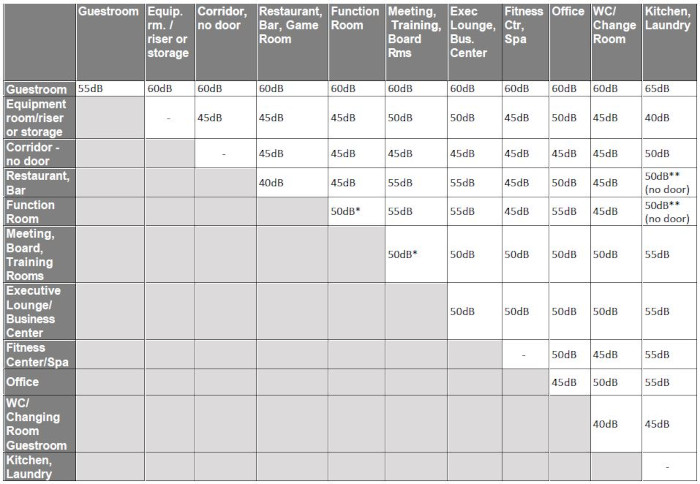
FIGURE 01: Example Sound Isolation Matrix
Sound isolation is commonly discussed using two main descriptors: sound reduction index [Rw, R’w] and sound transmission class [STC, ASTC]. It's worth noting that some hotel standards even state that these descriptors are generally equivalent. Here's an example from a well-known global brand:
"Numerically, the sound insulation performance descriptors of weighted sound reduction (Rw, R’w) and sound transmission class (STC, ASTC) are generally equivalent. Within this document, therefore, the parameters are considered directly interchangeable."
While we acknowledge that there are technical differences between these descriptors as acoustic consultants, for the sake of clarity and consistency, we will use the STC descriptor throughout the remainder of this discussion.
Some other aspects of noise can be quite detailed, including external noise, internal noise from HVAC systems, noise from elevators, rainfall noise, floor vibration, impact noise, reverberation time, and noise emissions to nearby properties. The following excerpts are sourced from one of the more comprehensive guidelines available.
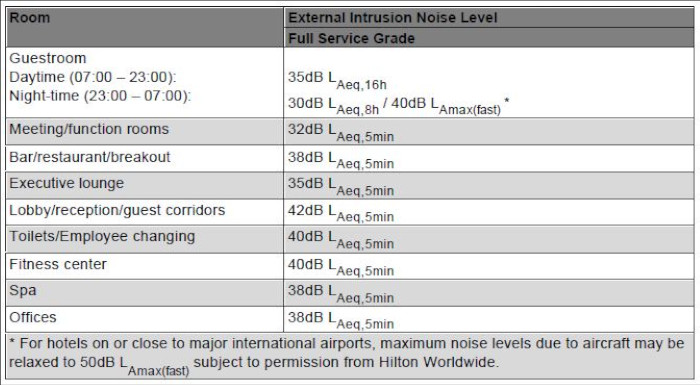
FIGURE 02: Example Criteria for External Noise Intrusion
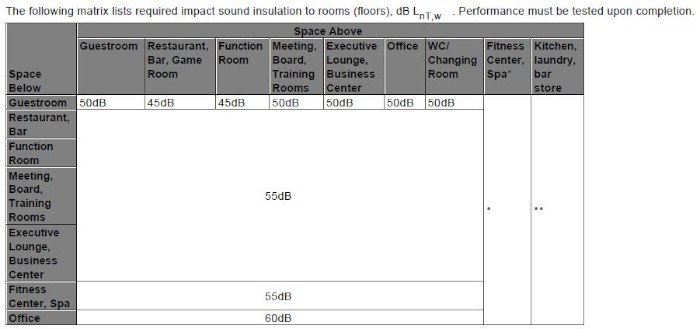
FIGURE 03: Footfall Impact Noise Matrix

FIGURE 04: Footfall Impact Noise Matrix
China GB Code for Hotels
In relation to hotel developments in China, the GB (Guo Biao) code system does include provisions for addressing acoustic performance. The JGJ 62 Code for Design of Hotel Buildings specifically makes reference to GB 50118 Code for Design of Sound Insulation of Civil Buildings, which outlines hotel acoustic performance requirements categorized into three grades: High, Middle, and Low. These grades serve as benchmarks for evaluating the acoustic performance of hotel buildings in China.
Under the GB 50118 Code for Design of Sound Insulation of Civil Buildings in China, various other aspects related to acoustic performance are addressed. The code discusses performance requirements for sound isolation, impact noise, external noise intrusion, and noise emission to neighboring properties. Specific limits are established to help ensure compliance with the prescribed acoustic standards. The following excerpts are from GB 50118 outlining some of the criteria.
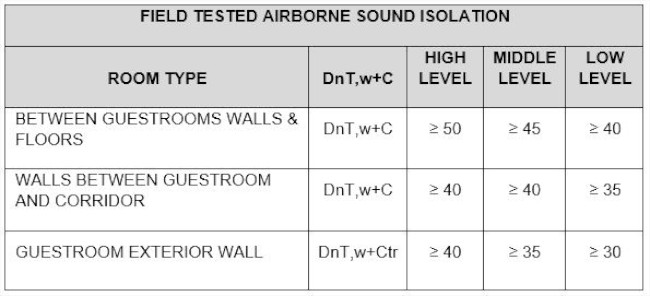
FIGURE 05: Sound isolation performance
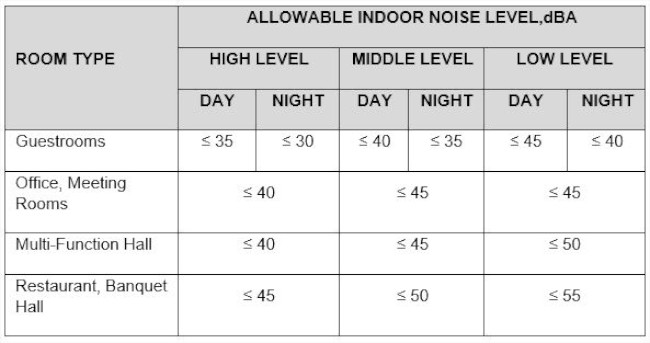
FIGURE 06: background noise levels
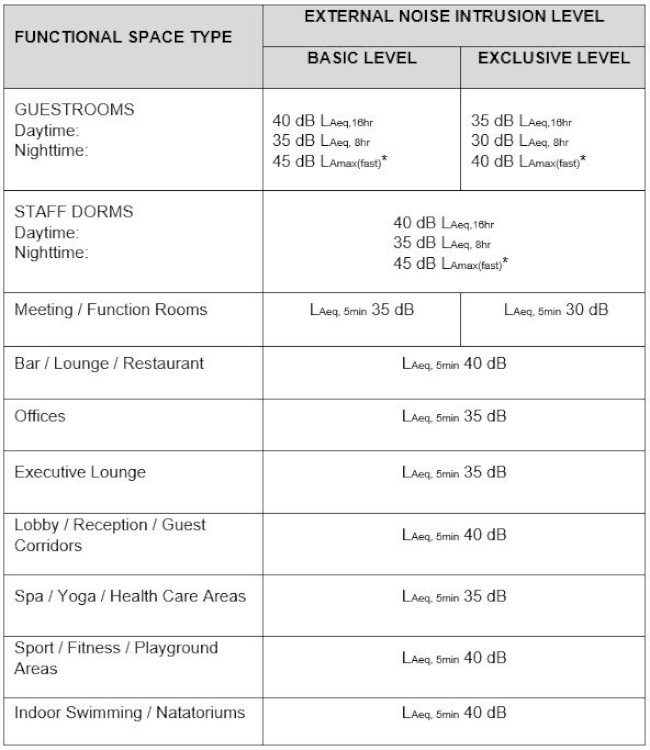
FIGURE 07: External noise intrusion limits
Key Findings
We surveyed guests to inquire whether they had officially complained about noise to the front desk. Surprisingly, over 80% responded that they had not. There was a difference between 4/5 Star vs 2/3 Stars facilities with more guests saying something in the 4/5 star facilities. Data indicates that guests did make a formal complaint more frequently in 4/5 Star facilities. However, the prevailing attitude seemed to be a sense of futility, with guests asking, “What difference would it make?” or 'Why bother complaining when nothing will be done?” or “I don’t want to make any trouble!”

Unfortunately, this perspective reflects a belief that their voices don't matter and discourages them from speaking up. While cultural differences may have some small level of contribution to this mindset, it hinders improvements and progress toward a better guest experience.
This reminds me of another story. Often, when trying to emphasize the importance of noise control or acoustics, I encounter responses like, 'We don't need acoustic services because we haven't received any complaints!' I'd like to highlight two points regarding this line of thinking.
- The number of complaints does not typically rank as a criteria in any design manual as far I can remember. It's definitely not used in ASHRAE, LEED, WELL or BREEAM. I don’t recall HVAC design criteria formulated around complaints. Similar to lighting, structural or any other discipline.
- If people feel that their opinions don't matter or are reluctant to lodge a complaint, naturally, there will be no complaints to address.
Guest Survey Results
The chart below displays the results of our survey conducted among hotel guests to identify their main concerns. The survey provides valuable insights into guest preferences and priorities, helping us understand their expectations.
Depending on the specific survey conducted, there may be variations in the overall rankings and the factors being assessed. However, one consistent finding in surveys is that noise ranks among the top factors considered important by guests. The results presented below illustrate that noise is ranked in the top 3. Among 2 to 3 star rated facilities noise ranked at # 3 while in 4 to 5 star facilities noise ranked at #2.
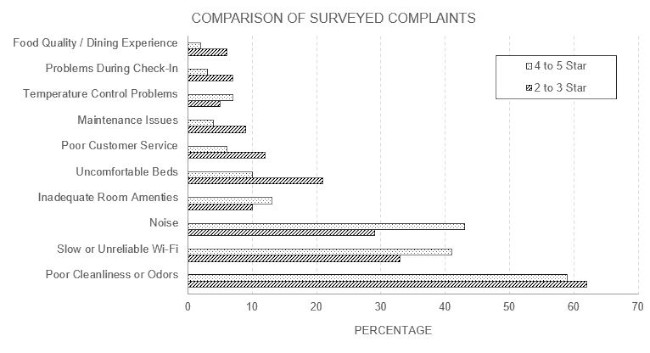
FIGURE 08: Guest Survey Key Factor Rankings, Noise is in top 3 depending on facility rating.
The chart below displays the rankings of different noise factors based on the survey conducted.
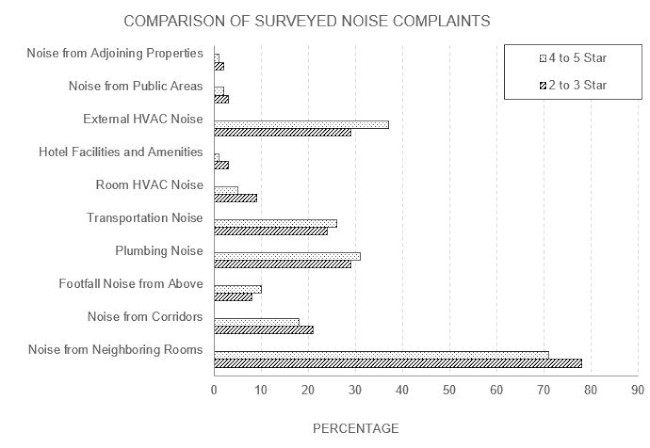
FIGURE 09: Guest Survey Key Noise Factor Rankings, Sound Isolation is #1.
As observed in the chart, sound isolation between guestrooms emerged as the highest concern, with nearly 80% of guests expressing their response. Guests typically indicated the ability to clearly hear intelligible voices, television, alarms and other activities.
In second place, external HVAC noise was identified as a significant concern. This typically refers to rooftop HVAC systems, either belonging to the hotel property or located on other nearby rooftops.
Plumbing noise and traffic noise were closely tied for the third position in the overall ranking. It was noted that guests often reported hearing sounds of toilets flushing and occasionally showers running.
Other factors such as noise from corridors and footfall noise followed in the list. Interestingly, guests staying for longer durations seemed to be more affected by these factors, suggesting a potential correlation between length of stay and sensitivity to these noise sources.
Before we go further, it is important to clarify that the subsequent sections will concentrate exclusively on the topics of sound isolation, external HVAC and traffic noise. Findings in the initial portion of the guest survey had indicated that the sound isolation between guestrooms was the top concern with guests. Additionally, we wished to provide some focus on external noise such as traffic and HVAC. While various other factors do contribute to the overall soundscape within the guestroom setting, we are limiting the scope of this discussion to prevent it from becoming too lengthy.
Context is Everything
From our interviews with guests, it was rather clear that with more context of a particular noise, the more bothered the guest. This should actually be of no surprise, especially with other acoustic consultants/specialist.
When considering noise, "context" can also refer to the additional information or characteristics of the noise source that contribute to its perceived annoyance. When people can discern more details about the noise, such as its specific source, pattern, or frequency content, it can enhance their awareness and sensitivity to the noise, potentially making it more annoying. The contextual information provides a deeper understanding of the noise and can influence individuals' subjective reactions and levels of annoyance.
An example, when it comes to hearing voices from an adjacent hotel guest room, when the voices are unintelligible or muffled, they may not cause much annoyance. However, as the level of intelligibility increases, and individuals can discern the words and understand the conversation, the annoyance level tends to rise as well. The clarity and comprehensibility of speech can make it more intrusive and disruptive, leading to heightened annoyance and discomfort for those trying to rest or relax in their own rooms.
In addition to considering the context of noise and its impact on annoyance, it's essential to recognize the role of plumbing noise in the guest experience. It is important to acknowledge the impact of plumbing noise, including showers running and draining, tubs running and draining, sinks running, and especially toilets flushing. Initially, minor plumbing sounds may not provoke significant annoyance. However, as guests become more adept at recognizing and identifying these specific plumbing events, the level of annoyance can indeed escalate significantly. The increased discernibility of plumbing noise allows guests to more readily perceive and attribute the sounds to their source, which can amplify the annoyance experienced.
Lastly, let's also explore the application of context to traffic noise. It's common for the mere mention of traffic noise to evoke a sense of annoyance, but it's important to recognize that not all traffic noise is equal. Local street noise, for instance, can encompass a diverse range of sources, including motorcycles, scooters, and delivery trucks, as well as the intermittent stop-and-go movement at traffic lights or intersections. On the other hand, larger highways, while potentially noisy, tend to maintain a more constant and continuous level of noise. Once again, the context in which the noise occurs plays a significant role in determining the level of annoyance experienced. Understanding this nuanced distinction is crucial in addressing and managing the impact of traffic noise on the overall guest experience.
This further emphasizes the significance of not only evaluating noise levels but also considering the character and content of the noise. Understanding the specific qualities and characteristics of the noise, such as its tonal variations, intensity fluctuations, and identifiable sources, becomes crucial in comprehending its impact on the guest experience. By taking into account these additional dimensions of noise, alongside noise levels, a more comprehensive assessment can be made, leading to more effective noise mitigation strategies and tailored guest experiences.
Sound Isolation
Sound isolation performance was measured in a total of 54 facilities, with 35 located in China. Additionally, measurements were taken in ten facilities in the US, as well as in S. Korea, Singapore, Sri Lanka, France, Spain, and London.
In China, measurements were conducted in several specific cities, including Shanghai (25 facilities), Hangzhou (2), Chengdu (2), Nanjing (4), Taipei (1), and Hong Kong (1). All of these hotels were rated 4 to 5 stars. Most of the facilities included in the study were international operators and brands that follow their own design and construction guidelines. However, among the surveyed facilities, only five were local brands, and they were unaware of any established guidelines addressing acoustics or noise.
The overall sound isolation performance demonstrated a passing rate of 64% when compared to achieving an STC (Sound Transmission Class) of 55 or higher. The recorded performance ranged from STC 40 to STC 57, with an average rating of STC 54 across all facilities. Out of the 35 measured facilities, two had marginal results with an average rating of STC 54, while six facilities achieved an STC rating of 57.
Measurements were also conducted in major cities in the United States, including San Francisco (2), Charlotte (2), Dallas (2), Austin (1), Los Angeles (2), and Chicago (1). Two facilities in Charlotte were considered 3-star, while the others were rated 4 to 5 stars. All facilities in these locations are operated by well-known and established brands that have their own established guidelines, including acoustic requirements.
The overall passing rate for all measured facilities was 70% when compared to the common criteria of achieving an STC of 55. The lowest recorded performance was STC 38, while the highest was STC 57. The two 3-star hotels in Charlotte achieved an appropriate rating of STC 51 to 52.
In South Korea, three hotel facilities were measured, with two located in the Gangnam district of Seoul and the third one in Pyeongtaek near the main gate of Camp Humphreys. The Seoul hotels belonged to the 4 to 5-star category, while the Pyeongtaek hotel was rated as a 3-star establishment. All three hotels were local Korean brands, with the Pyeongtaek hotel being a small, family-owned facility. These facilities did not have a specific design guideline in place.
Both Seoul hotels achieved an STC of 55 or better, while the Pyeongtaek hotel achieved an STC rating of 53. All of them did not have an established criteria for sound isolation (or acoustics in general), but they did achieve an acceptable performance based on the design goals mentioned previously.
While many hotels were able to achieve satisfactory sound isolation performance based on the guidelines mentioned earlier, it is important to acknowledge that a significant number of hotels did not meet this level of performance and, as a result, fell short of their own established acoustic standards.
Very rarely were separating wall assemblies selected in a manner that would be deemed not recommended. Most included what would be considered an appropriate wall assembly. The identified unacceptable wall assemblies included a 200mm lightweight aerated concrete with a plaster skim coat, as well as a single metal stud wall with two layers of sheetrock on both sides with batt insulation. Additionally, a double stud wall composed of two rows of 75mm studs and batt insulation, attached directly without any airspace between, was also deemed inadequate, essentially functioning as a single 150mm stud.
Most assemblies were constructed as double 75mm to 100mm stud walls with a proper airspace between them without bridging between the studs. Some indicated 200mm concrete block walls, with furred out layers of plywood and sheetrock on both sides with batt insulation in the cavities on both sides.
In most cases where a properly selected wall assembly failed to achieve the desired results, the main contributing factor was improper detailing. Many facilities feature curtain wall facades, consisting of vertical and horizontal mullions. Unfortunately, it is common to observe that the mullions are not designed to effectively block sound or that the joint between the wall and the mullion is not adequately sealed. As a result, gaps often exist, and in some instances, we have even observed a direct line of sight to the adjacent guestroom.
Another common occurrence involves vertical air conditioning units in guestrooms, where the unit's closet is aligned with the separating wall. While drawings typically indicate separation between adjacent spaces, it is frequently observed that penetrations are not properly sealed, allowing for a direct path for sound transmission. A detail that could easily have been checked.
Guestroom bathroom exhaust fans are another example where sound isolation performance is often compromised. In some cases, the ducting allows for a direct sound path between rooms, and the penetrations are not adequately sealed, further worsening the issue.
The following images illustrate some of the common observations that contribute to lower-than-expected sound isolation performance.
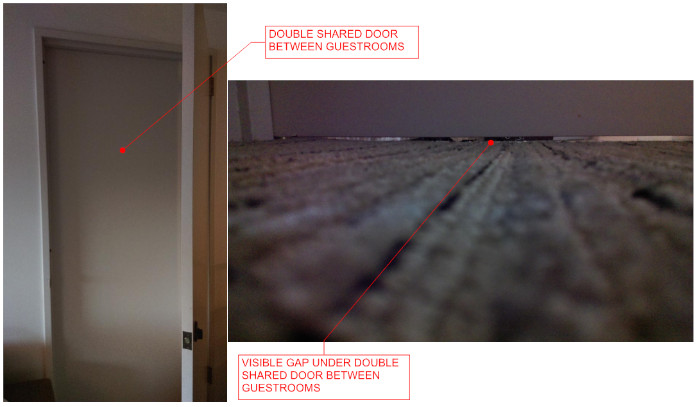
FIGURE 10: Double shared door between guestrooms, there is no seal below the door as can be seen with the visible gap.
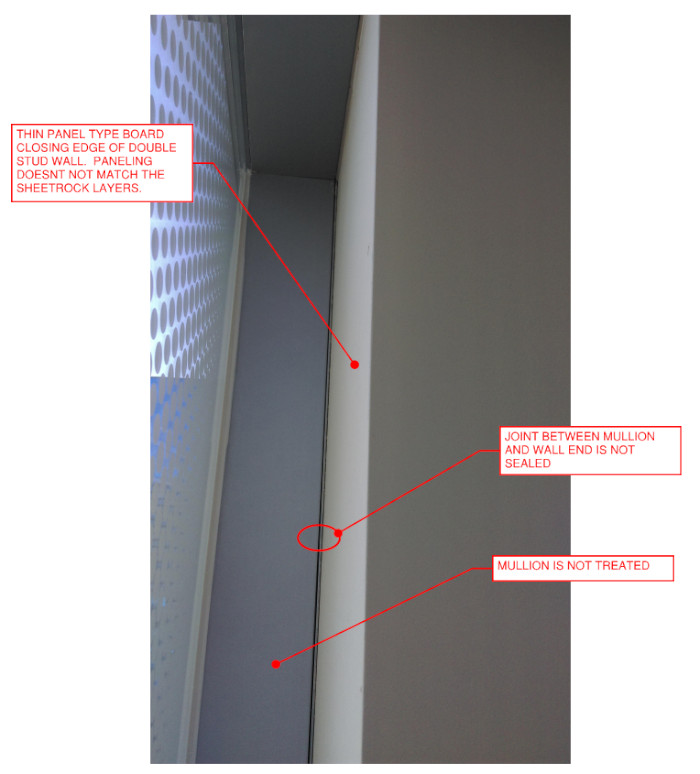
FIGURE 11: Wall connection to mullion. Here the panel at the end of the wall flexes and felt similar to 5mm wall paneling. Also, this panel could be pushed allowing for site line into next room.
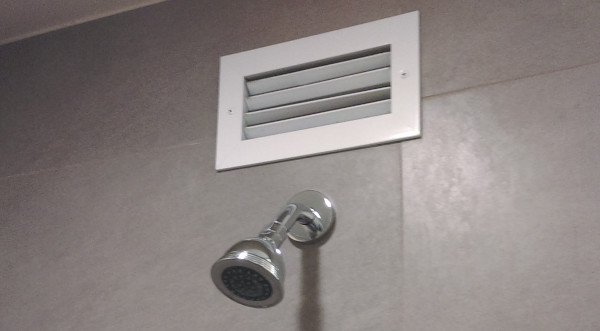
FIGURE 12: Shared exhaust openings in demising wall within guestrooms allowed for ease of noise transfer and perception of activities
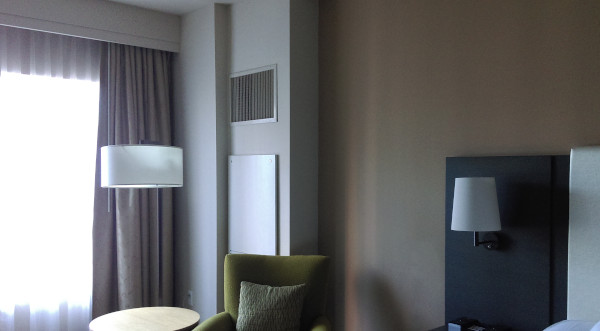
FIGURE 13: Vertical HVAC units in a common wall without detail provided to control leaks and noise transfer.
External Noise Intrusion
External noise intrusion refers to the collective impact of various noise sources originating from the exterior and reaching the interior areas of guestrooms. During the measurement process, particular attention was given to selecting guestrooms that directly faced highways, other roads, or even rooftop HVAC systems. The choice of floor level varied across different facilities, with some guestrooms situated on slightly higher levels, while others were closer to ground level or at intermediate elevations.
It is important to acknowledge that the duration of measurements varied among the different facilities. In some cases, data could only be collected for a single 24-hour period, while in other instances, data spanning a 72-hour period was obtained. The objective remained consistent throughout, aiming to assess and understand the noise levels experienced within guestrooms. As a reminder, the typical criteria for external noise intrusion is to achieve an LAeq[8hr] between 23:00 to 07:00.
The following chart presents the average nighttime noise levels recorded between 23:00 and 07:00 throughout the duration of our stay.
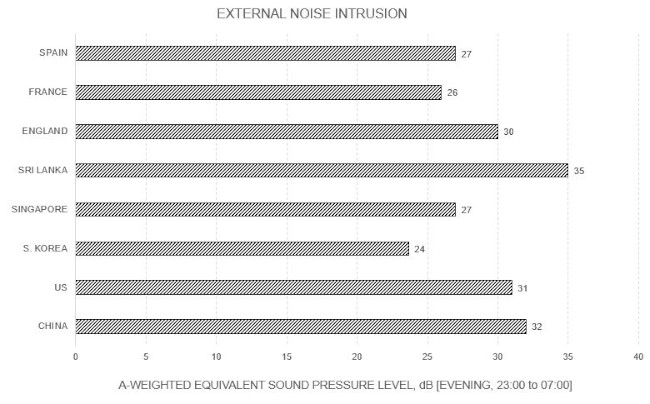
FIGURE 14: Noise Intrusion Measurement Results
The majority of locations achieved LAeq 30 dB or lower, indicating favorable noise levels. As can be seen there were two that slightly exceeded this level. Notably, the hotels measured in S. Korea performed rather well. This is because all three hotels made use of double window systems. Below are examples illustrating this approach.
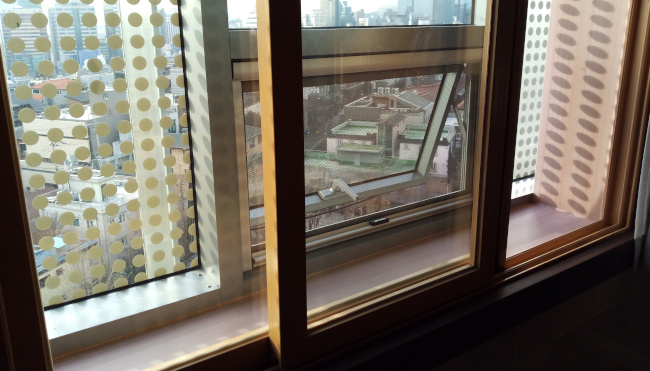
FIGURE 15: Gangnam district hotel with large space between double windows
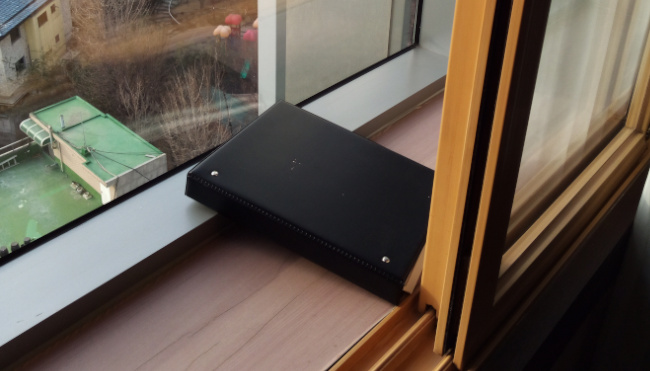
FIGURE 16: Gangnam district hotel with large space between double windows and binder for scale
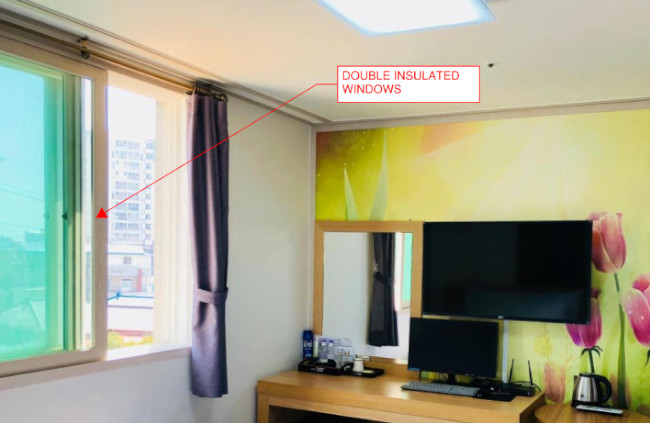
FIGURE 17: Another Gangnam district hotel with double windows
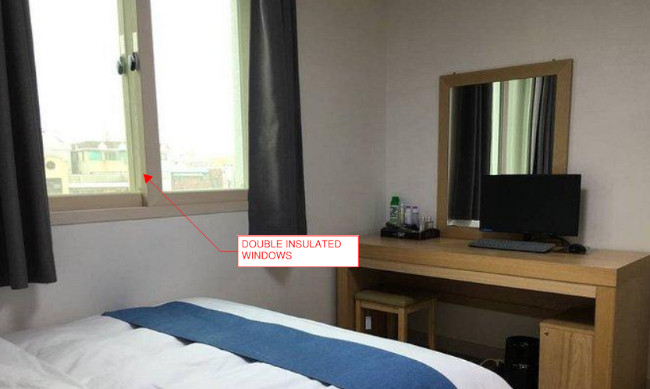
FIGURE 18: Pyeontaek hotel with double windows

FIGURE 19: Guestroom overlooking interstate highway with single window assembly.
The hotel in France was situated near a busy roundabout and had the advantage of double insulated windows, which contributed to low interior noise levels.
In Colombo, Sri Lanka, measurements were conducted on the 7th floor, with the guestroom facing a nearby railway. This proximity to the railway, combined with regular street traffic, contributed to the overall noise environment.
Double window assemblies, although highly effective, may not always be required. The provided images serve as examples to demonstrate that even small-scale hotels are considering this as an option. In many cases, a single window assembly can suffice if carefully chosen. It often involves selecting an assembly with suitable glazing, spandrel, and mullion configurations. This approach can result in cost savings while delivering improved performance compared to standard insulated window systems, which typically offer a Sound Transmission Class (STC) rating of approximately 35.
In both China and the US, our larger sample size allowed us to identify a greater number of rooms with noise issues originating from the exterior. Among the sources of complaints, rooftop HVAC systems were frequently mentioned and were more prevalent than noise from highways. However, it is worth noting that local street traffic also remained a concern, although to a slightly lesser extent compared to HVAC systems. Below are a few examples of the conditions.
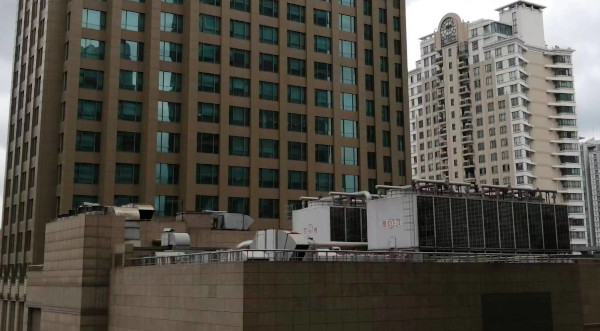
FIGURE 20: Another view showing the extent of large HVAC systems exposed to guestrooms.
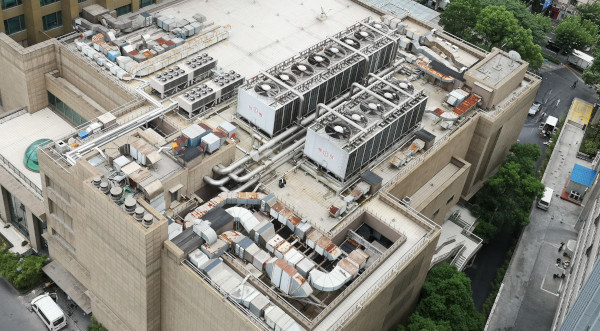
FIGURE 21: Another view showing the extent of large HVAC systems exposed to guestrooms.
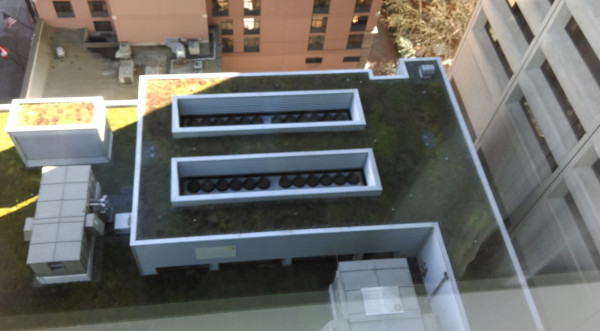
FIGURE 22: Air-cooled chillers located in plantroom on rooftop
Noise generated from rooftop equipment was primarily attributed to air-cooled chillers, with occasional contributions from cooling towers and exhaust fans during their power cycling. Among these, the chillers stood out as the most dominant source of noise due to their compressors. The compressors generate high-amplitude and easily noticeable tones, typically within the range of 125Hz to 250 Hz, reaching levels of 90 dB or higher. This tonal frequency manifests as a “buzzing” or “humming” sound, which can be perceived even at significant distances. Although we were unable to ascertain if any noise-reducing treatment was applied to the compressors, in most cases, there is none or the wrong material was installed. In some other installations, we will commonly observe a closed-cell foam wrapping the compressor. Unfortunately, the application of closed-cell foam does not offer the required barrier to effectively block or reduce noise, particularly when dealing with strong tones like the ones mentioned. Instead, it is more effective to utilize a flexible mass barrier material for this purpose.
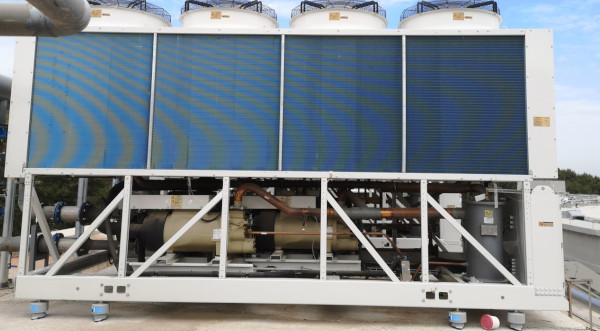
FIGURE 23: Typical air-cooled chiller with compressor unwrapped
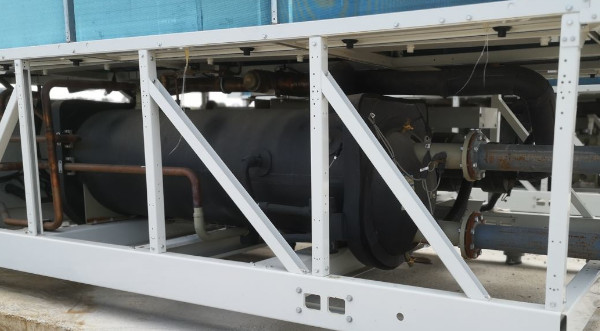
FIGURE 24: Typical air-cooled chiller with compressor wrapped using closed-cell foam
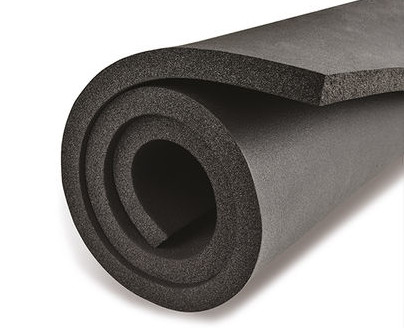
FIGURE 25: Closed-cell foam often observed for wrapping compressors. Not recommended.
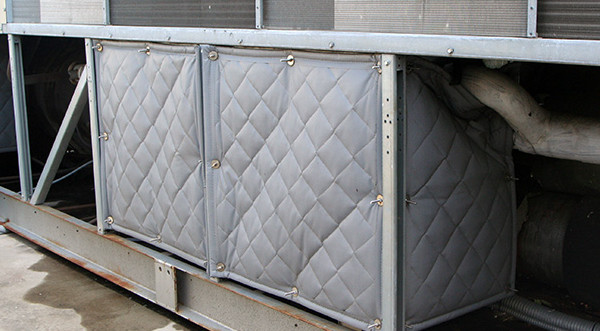
FIGURE 26: A more effective method of enclosing the compressor using a flexible barrier material. (image sourced from Kinetics)
When dealing with rooftop equipment noise in new projects, the optimal approach is to avoid positioning noisy equipment near guestrooms altogether. If this is not feasible, alternative equipment with lower noise levels may be a possible alternative solution. As a last resort, windows can be evaluated to identify potential modifications or alternative selections. By utilizing a façade noise model, it is possible to estimate the level of noise exposure, thereby facilitating targeted improvements to minimize the cost impact.
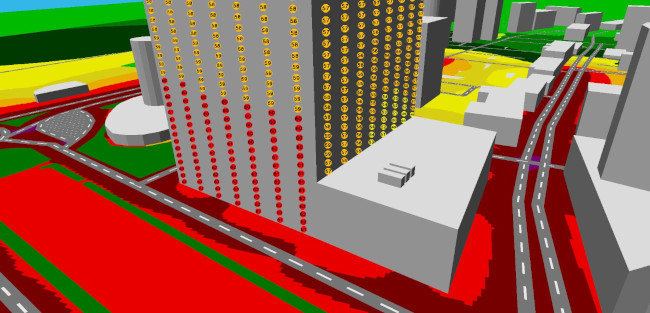
FIGURE 27: Example facade noise map for hotel evaluating traffic and rooftop equipment noise exposure.
Traffic Noise Measurements
The measurements conducted were not intended as comprehensive traffic evaluations but rather aimed to provide a snapshot for basic comparisons. Special consideration was given to capturing data during busy periods of the day, including morning and afternoon traffic, as well as occasionally during the lunch hour. These time slots were chosen to help ensure a representative sampling of typical traffic conditions, specifically targeting "worst-case" scenarios where noise levels are expected to be higher.
Measurements were conducted at multiple intersections around Shanghai and including other locations around the world. The primary objective of this study was to gather empirical data and substantiate the notion that Shanghai's noise levels are not inherently higher than those of other major cities. Additionally, the research aimed to identify instances where Shanghai's noise levels were comparatively lower. By documenting and analyzing these findings, an understanding of the traffic noise situation in Shanghai can be obtained.
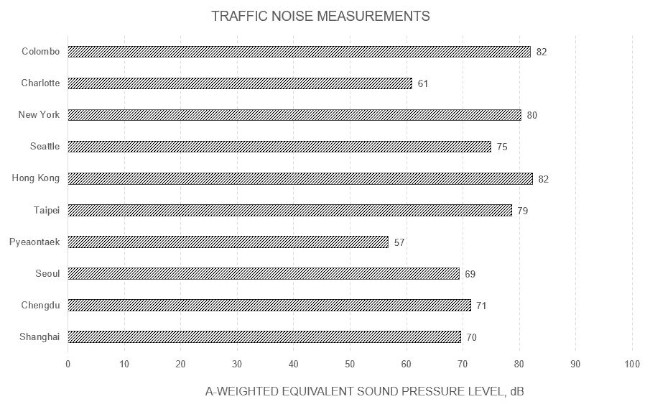
FIGURE 28: Traffic noise measurement results indicated as an average per location
The top three cities with the highest noise levels measured were Colombo, Hong Kong, and New York. In the measurement location of Colombo, there was a notable presence of numerous gas-powered bikes and scooters, contributing to the overall observed noise levels.
In locations such as New York, Hong Kong, and even Seattle, the measurement sites were situated in the downtown CBD. In New York, measurements were taken in Manhattan near 7th Avenue and W 44th Street, while in Hong Kong, the measurements were conducted in the Wan Chai district near Connaught Road Central and Des Voeux Road Central. The key point to note is that most of these locations are characterized by high building density, with tall buildings situated close together and smaller setbacks. This proximity between buildings, coupled with smaller setbacks, gives rise to what is known as the "canyon effect."
The canyon effect refers to a phenomenon commonly observed in urban areas with high-rise buildings and narrow streets. It occurs when buildings on both sides of a street create a channel or "canyon" that traps and reflects sound waves. As sound waves bounce between buildings, the multiple reflections leads to prolonged sound propagation. This gives the perception of amplified noise levels within the street. The canyon effect is influenced by factors such as the height and spacing of buildings, the width of the street, and the materials of the surrounding surfaces.
On the other hand, Shanghai, although also a densely populated city, tends to have much larger setbacks in many areas. And where buildings are closer together, they tend to be lower in height. As a result, the canyon effect is less pronounced in Shanghai. The relatively greater spacing between buildings in Shanghai helps mitigate the impact of noise amplification compared to cities with smaller setbacks and buildings located closer together.
In Taipei, noise levels also were relatively high when compared to Shanghai. The noise observed at intersections primarily stemmed from the significant presence of gas-powered bikes and scooters, which were frequently passing by or accelerating from a stationary position.
Below are a few image examples illustrating the measurement positions.
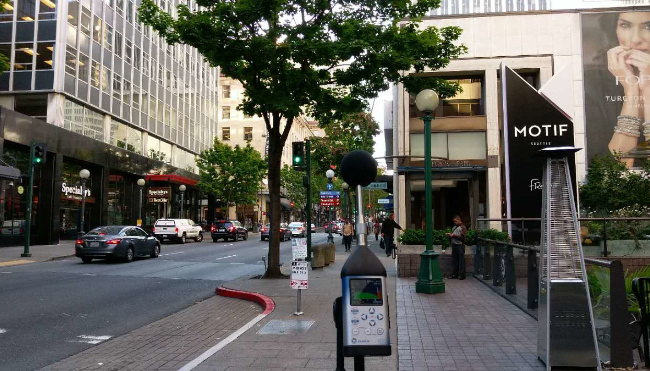
FIGURE 29: Seattle - Measured outside of Hilton Motif along 5th Avenue between Pike St and Union St
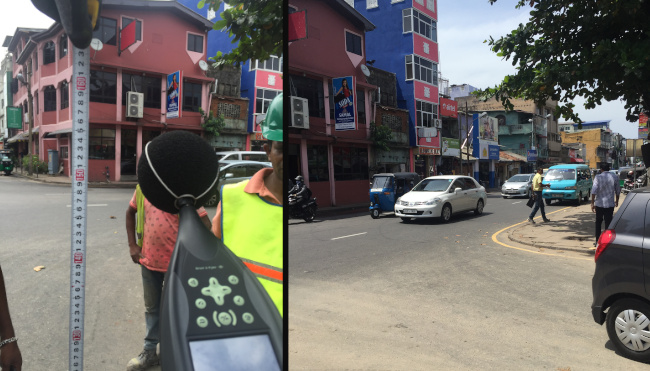
FIGURE 30: Colombo - Measured at intersection of Malay St and New Ferry Lane
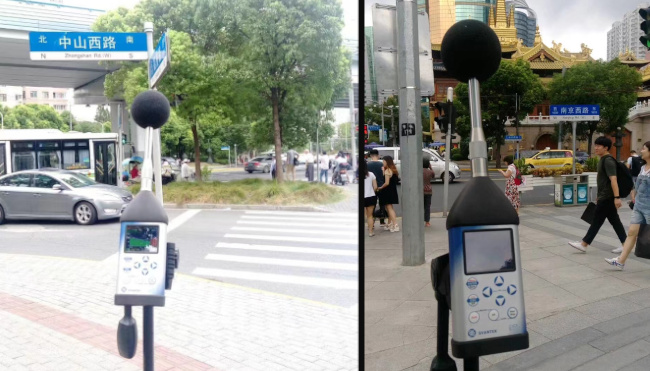
FIGURE 31: Shanghai - Left Measured at Zhongshan West Road and Hongqiao Road intersection. Right Measured at intersection of Nanjing West Road and Huashan Road
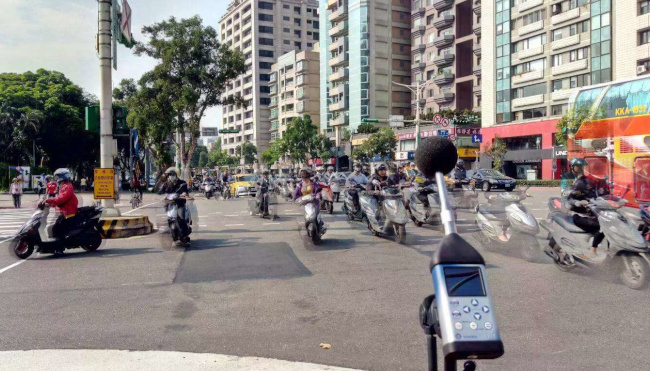
FIGURE 32: Measured in Taipei near Da'An Park Xinyi Road
Final Thoughts
One of the primary objectives of this survey was to validate that traffic noise is not a primary concern for guests, which has been successfully confirmed through the survey findings. It has been determined that the main concern lies in the sound isolation between guestrooms, attributed to a lack of detailing. In some cases, non-recommended wall assemblies were chosen, while in others, the wall was not adequately designed to achieve the expected sound isolation performance.
Improving sound isolation performance is a worthwhile endeavor as it is the primary cause of guest complaints. Fortunately, achieving this goal does not necessitate significant costs for the project. It merely requires careful review of drawings, providing necessary feedback and comments, and ensuring that the appropriate details are included. However, it is important to note that even with comprehensive reports, the successful implementation of these details ultimately relies on effective communication with the general contractor. At times it will also be necessary to convey the importance for why these details are included.
Conveying the importance of including the necessary details becomes crucial in certain instances. By emphasizing the significance of these details, we can underscore their role in enhancing the overall guest experience. Effective communication and collaboration between all parties involved, including designers, operators, developers and the GC are essential to ensure that the required details are incorporated into the project. This way, we can emphasize the positive impact they will have on sound isolation performance and address the primary concerns expressed by guests.
Another objective was to present evidence that challenges the perception of Shanghai as a noisy city. Our comprehensive traffic noise measurements revealed that Shanghai is, in fact, quieter than many other major cities. Out of the 10 cities we surveyed, we conducted the most measurements in Shanghai, and the results consistently placed it in the lower 50% in terms of noise levels.
Rooftop HVAC units rank second in terms of guest responses regarding noise. Addressing rooftop noise challenges can be somewhat complex, but it does not necessarily have to incur significant costs. In some cases, the issue can be resolved by selecting quieter equipment or exploring alternative locations away from guestrooms during the planning stages. By identifying such issues early on, it may be possible to consider different equipment placement or conduct a noise study to evaluate the impact on guestrooms and potentially implement improvements such as enhanced windows. Utilizing a façade noise model can optimize the process by pinpointing areas where window enhancements are needed.
Addressing the noise concerns raised by guests does not necessarily require a significant financial investment. Many of these issues can be effectively addressed during the early planning and design stages. Here are a few suggestions to consider:
- Review the existing hotel design and construction guidelines to ensure they align with the desired acoustic and noise control objectives. We can assist in creating, revising, or updating these guidelines as necessary.
- Conduct a thorough site survey to identify any potential noise issues related to traffic or nearby properties. A comprehensive site noise study would be the most appropriate approach.
- Carefully review the proposed drawings and details. We can provide comprehensive support throughout the design and construction process. However, in some cases, a basic drawing review with “redlines and comments” may be sufficient to ensure the inclusion of any necessary details.
By implementing these steps, we can proactively address noise concerns and enhance the overall acoustic performance of the project.
We would welcome the opportunity to assist with your project.
Contact Us